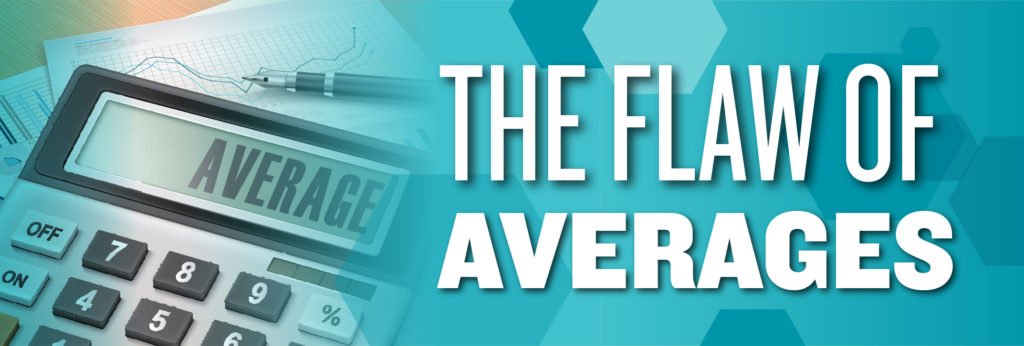
Sam Savage coined the phrase “the flaw of averages.” I date myself too often in this blog, but I was lucky to discover Sam in 1992 when I was fortunate to attend one of his “Quantitative Management Tools for Spreadsheets” seminars. Monte Carlo Simulation and Decision Analysis have been at the forefront of my mindset for a long time. Regardless, Sam was the first person to really put data analytics into complete perspective. His teaching was a huge driver in my conversion to a Bayesian perspective. Sam uses simple examples such as the case of a sophisticated statistician who drowns while fording a river that he calculates is three feet deep on average.
Marketing plans based solely on assumptions about average conditions almost always go wrong. At a minimum, they are severely crippled in the context of evaluating uncertainty and minimizing risk. However, most business managers only want “one number” from the insights professionals that are trying to help these executives make better marketing decisions. The reason for rehashing this concept here on the blog is a different. Maybe I am complaining a little bit, but a recent “average-only thinking client engagement in Spain generated more work than it needed. The results for a series of scenario outcomes were called into question since they didn’t yield the expectations anticipated for a client in Madrid, Spain. The truth was that there were substantial differences in the client market share across the different geographic areas.
A single view of TOTAL ES ESPANA ALIMENTACION (basically, the aggregate national view to total Spain) was just too simplistic. The core SKUs in the client’s portfolio had very different sales rates across geographic areas. A big part of this was the shopper preference for certain package types, e.g. glass versus plastic, that significantly varied by region. Subsequently, scenarios involving a sweeping assortment change—that increased distribution for some SKUs while completely deleting other SKUs—didn’t play to the local strengths of the brand. Some areas registered gains, but these were cancelled out by losses in other regions. A lengthy debate of the model validity ensued, but the reality of the issue was an ignorance of the real marketplace. In that context, the model results were actually quite intuitive. After several iterations and multiple conversations, we finally got our point across. But, in the end, we were asked to provide the “one number.”
Sam’s book from 2009 called The Flaw of Averages: Why we Underestimate Risk in the Face of Uncertainty does a much better job of explaining the situation. Although the topic is heavy on statistical procedures, data structures, and technological tools, the text focuses on intuitive visualization using simple everyday props—such as rotating a game-board spinner or rolling a pair of dice. Instead of statistical mumbo jumbo, you’ll find straightforward and everyday language throughout the book. I highly recommend that both marketing and insights professionals take time to read the book. Hopefully Sam will put complete data analytics into perspective for you as he did for me.
Middlegame is the only ROMI consultancy of its kind that offers a holistic view of the implications of resource allocation and investment in the marketplace. Our approach to scenario-planning differs from other marketing analytics providers by addressing the anticipated outcome for every SKU (your portfolio and your competitors’) in every channel. Similar to the pieces in chess, each stakeholder can now evaluate the trade-offs of potential choices and collectively apply them to create win-win results.
